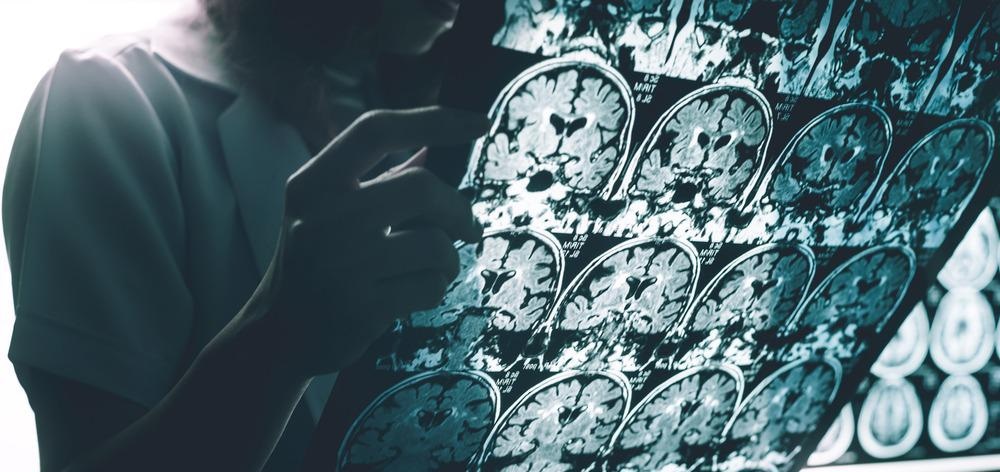
Image Credit: Atthapon Raksthaput/Shutterstock.com
The brain is one of the most complex structures in the known universe, a network of cells, neurons, and connections that control sensation, movement, thought, memories, and feeling. But when this network becomes damaged, a person can develop dementia, a neurodegenerative disease that affects their memories and personalities.
Dementia is not a normal part of aging, and although visible symptoms manifest themselves later in life, the diseases that cause it often develop much earlier. A new partnership between Alzheimer’s Research UK and Boston University aims to create a digital device that can detect neurodegenerative diseases 10 to 15 years before the first symptoms appear.
What is Dementia?
Dementia comprises four primary diseases – Alzheimer’s Disease, frontotemporal dementia, dementia with Lewy bodies, and vascular dementia. The damage that occurs in the brain determines the symptoms experienced, however, common indicators include memory loss, confusion, personality changes, communication difficulties, and reasoning problems.
What is dementia? Alzheimer's Research UK
Video Credit: AlzheimersResearch UK/YouTube.com
Alzheimer’s Disease is the most common cause of dementia. Damage occurs in the hippocampus, which controls memory and navigation, so forgetfulness is often the first symptom. It is caused by an accumulation of the proteins Tau and Amyloid; these are always present in the brain but form clumps in the brains of those with Alzheimer’s. Scientists believe that genetics and aging have a role to play.
“There are currently no treatments to slow or stop diseases like Alzheimer’s and this is a major goal for scientists across the world,” explains Hilary Evans, CEO of Alzheimer’s Research UK.
To have the best chance to change lives in future, we need to be testing potential new treatments and preventions when these diseases are starting to take hold in the brain, not when the damage has already been done.”
Hilary Evans, CEO of Alzheimer’s Research UK.
Using Smart Tech to Combat Alzheimer’s Disease
A three-year partnership between Alzheimer’s Research UK and Boston University Alzheimer’s Disease Research Centre (BU ADRC) will use smartphone apps and wearable devices such as smartwatches and headbands to collect digital data to detect Alzheimer’s years before symptoms show.
Up to 200 volunteers with and without dementia will use the devices for two weeks every three months for one year. The smartphone apps, tracking watches, and static and prototype sensors will monitor several factors, including sleep, neural activity, cognition, speech and language, fine motor skills, and physical activity.
The data will be shared with the Early Detection of Neurodegenerative diseases (EDoN) initiative, which will validate the data with clinical data such as brain scans. It will be further analyzed by their Analytic Hub, which includes experts from The Alan Turing Institute, University of Exeter, MRC Harwell Institute, and the University of Cambridge.
By amalgamating large amounts of retrospective and prospective digital and clinical information, EDoN aims to develop a robust machine learning model capable of detecting subtle patterns or fingerprints in people’s digital data, acting as a red flag for early disease.
“The diseases that cause dementia can start in midlife, but we currently don’t have inexpensive and non-invasive methods to detect this early disease,” states Dr Jesse Mez, Clinical Core Director for BU ADRC. “Digital technologies like smartphones and wearables could provide a low cost, easy-to-use way to pick up some of the very subtle early changes in diseases like Alzheimer’s.”
This study's findings could transform the way we tackle these diseases in the future, Mez says. The desired result is a digital toolkit that collects the most predictive digital indicators of early disease. This could be used as part of a mid-life health check-up to identify those most at risk long before symptoms occur. It might even be possible to distinguish between the different diseases that cause dementia.
“Identifying diseases like Alzheimer’s much earlier than we can today would transform research efforts into the condition and help bring about these life-changing treatments much sooner,” adds Evans. “Brain health is an incredibly important part of our overall health. The technology being explored through EDoN could help raise red flags that would see many more people benefit from early conversations, diagnosis and access to treatment and research.”
The Future
The COVID-19 pandemic has meant health care has increasingly been delivered remotely, and digital health technology is likely to remain critical to the future of health services. We already use a wide range of technology in healthcare. Utilizing technology at our fingertips to identify those most a risk of developing disease is just another step towards using our digital data to help us quickly and inexpensively monitor and understand our health.
References and Further Reading
Alzheimer’s Research UK (2021), Could your smartphone hold clues to early Alzheimer’s disease? https://www.alzheimersresearchuk.org/could-your-smartphone-hold-clues-to-early-alzheimers-disease/. Accessed 31st March 2021.
EDoN https://edon-initiative.org/researchers. Accessed 31st March 2021.
Disclaimer: The views expressed here are those of the author expressed in their private capacity and do not necessarily represent the views of AZoM.com Limited T/A AZoNetwork the owner and operator of this website. This disclaimer forms part of the Terms and conditions of use of this website.